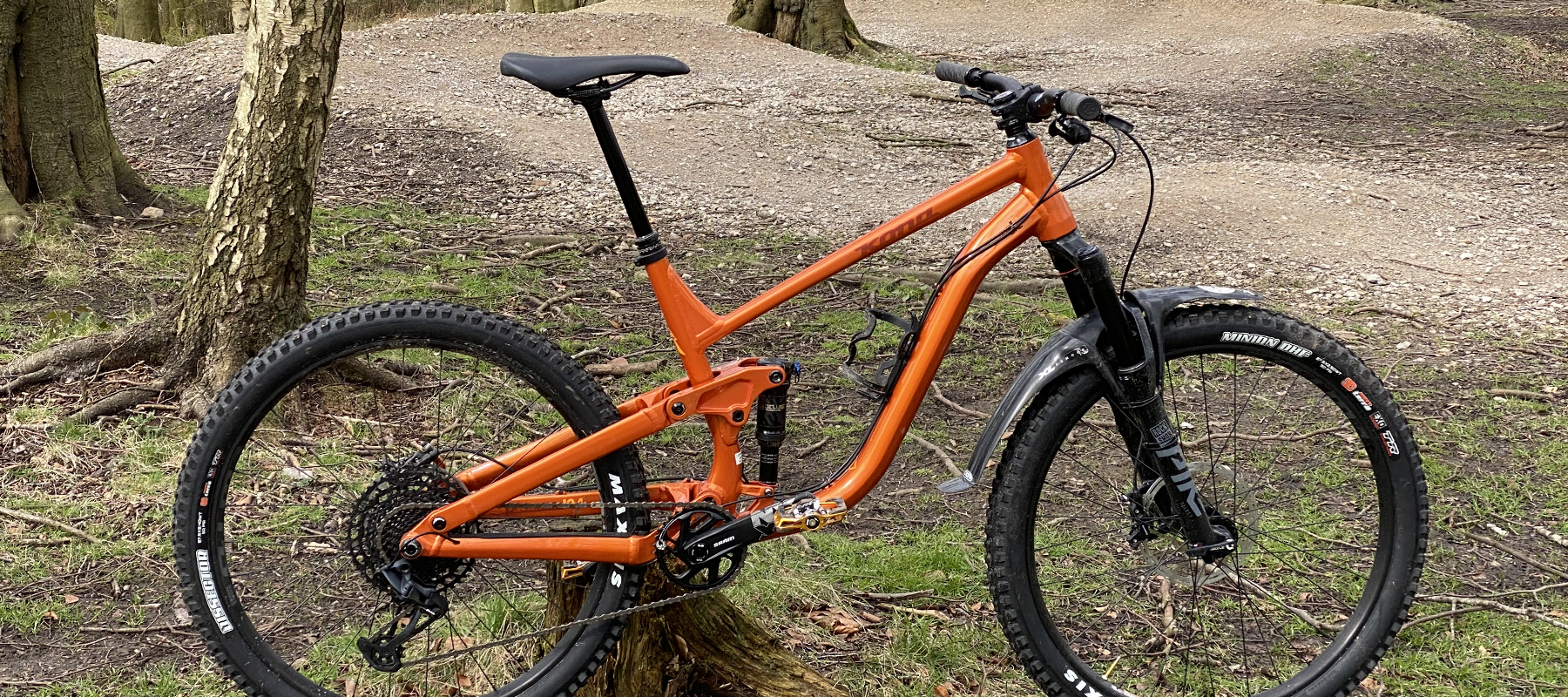Bike Perfect Verdict
Kona’s Process 134 DL 27.5 has the potential to be a punchy and agile trail raver, but front end flex and dynamic imbalance make it sketchy on the trail and simple frame, below par componentry and high weight do it no favours
Pros
- +
Top spec rear shock and tires
- +
Tight, responsive rear end
- +
High control brakes
- +
Plenty of tire room
- +
External controls for easy servicing
Cons
- -
Front end lacks stiffness and confidence
- -
Feels steeper and shorter than it is
- -
Sits high relative to axles
- -
Below par component value
- -
Relatively heavy
- -
Basic frame
Why trust BikePerfect
The Process has been Kona’s ‘mountain biker’s mountain bike’ for a while and is Kona's best full-suspension mountain bike across 170, 153 and 134mm travel version options. Not only that but there are plenty of options with 27.5 or 29in wheels and carbon or alloy frames.
We let rip on our favorite jump, pump and rocky lump trails on the DL version of the 27.5in alloy 134 to find out whether Kona’s legendary reputation for big grin hardcore bikes still holds true.
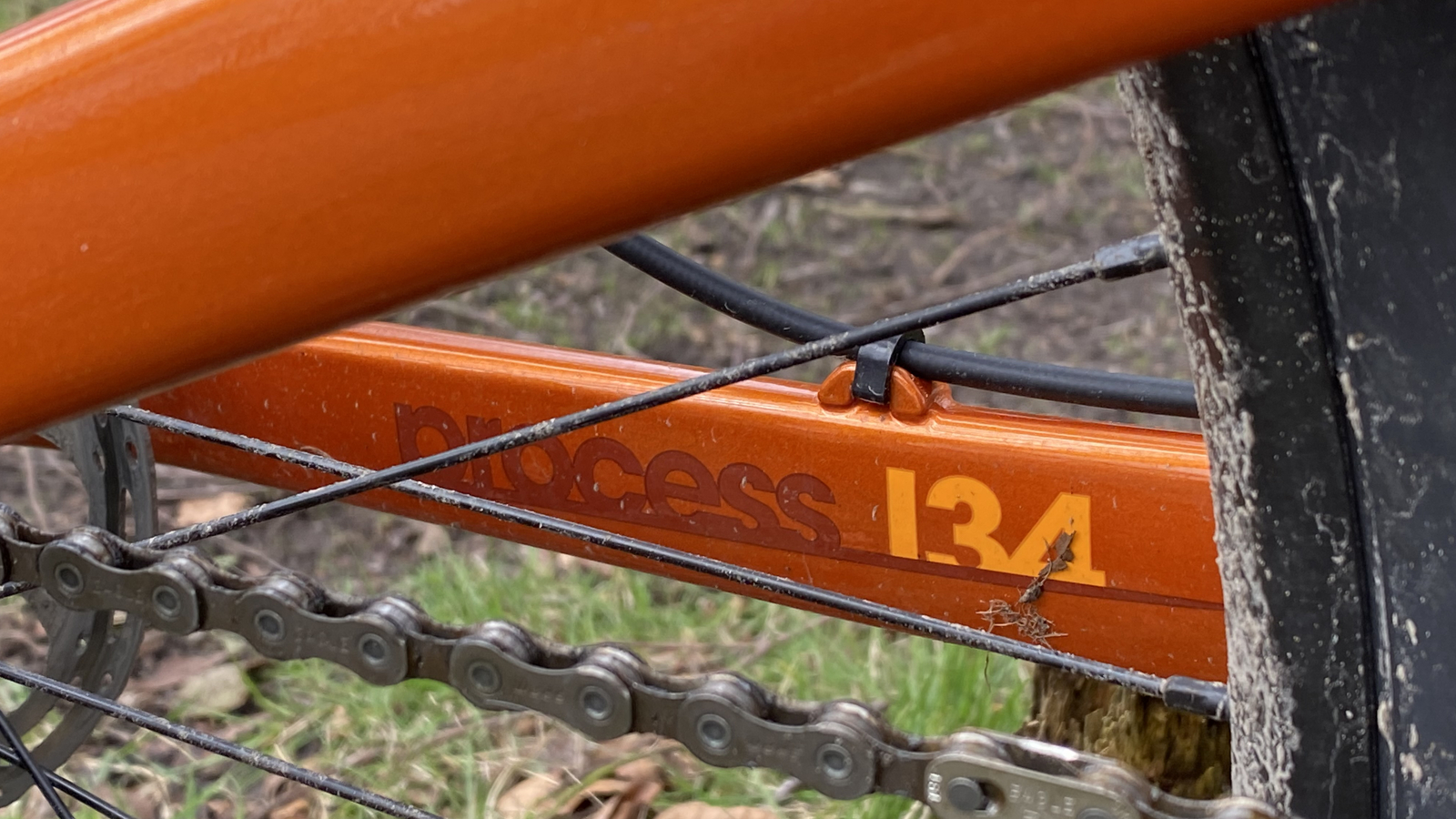
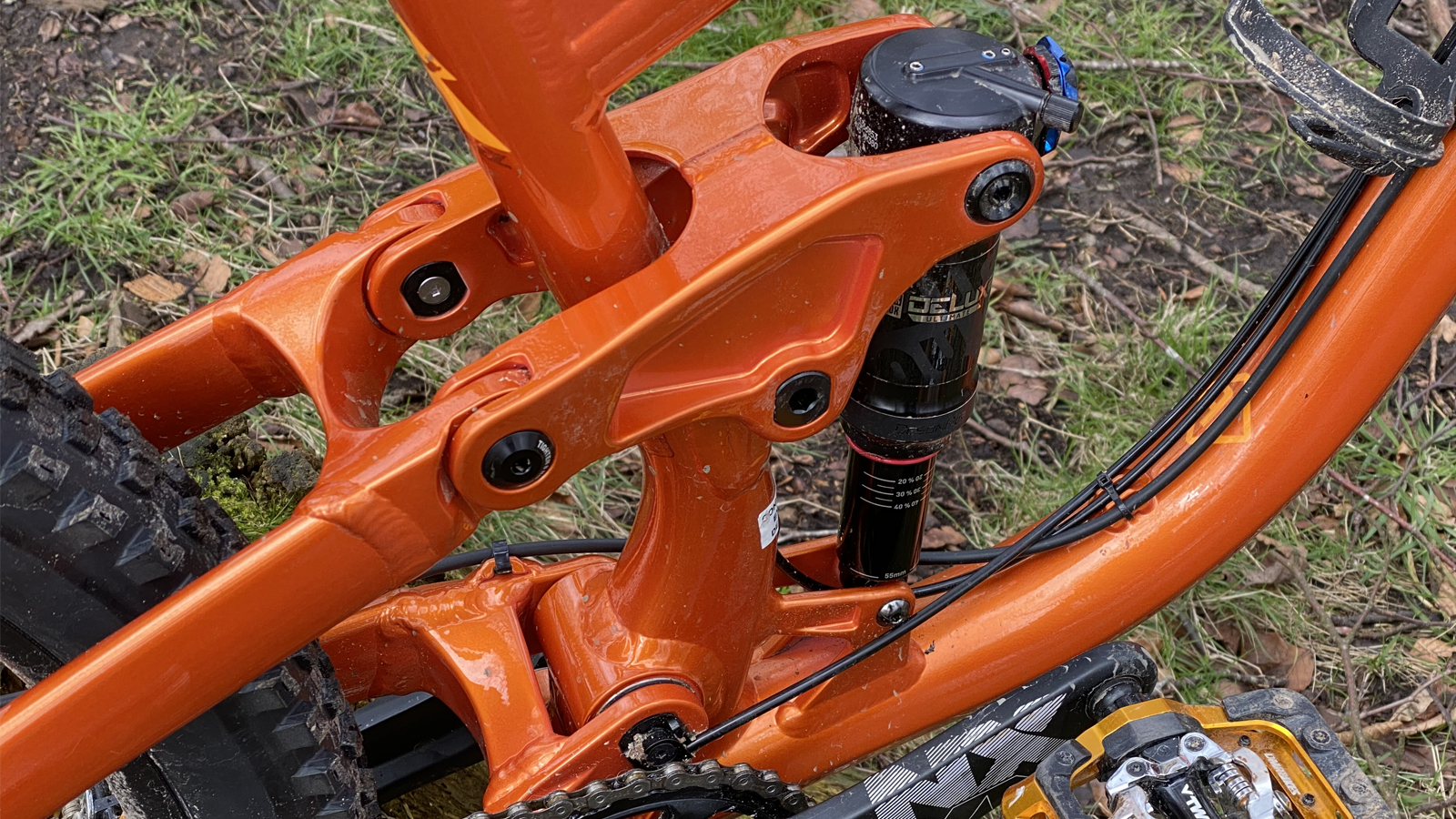
Design and geometry
We’re seeing some really smart alloy frames with hatch accessed internal storage and multiple cargo mounts appearing now, and internal cable routing has been the norm for a while. Apart from a short section of rear gear cable inside the drive side chainstay and a bit of dropper cable in the seat tube, the Process wears all its cables on the outside. They tend to swerve about too as the zip-tie fasteners are only thin. The dual-duty bottle cage and cable clip bolts are also on the short side so there aren’t many threads engaged if you do fit a bottle. The high mount point also makes space tight with a larger bottle so you’ll need to use a side-loading cage. On the plus side, external control lines make switching brakes very easy and it keeps costs down for Kona, but we’d get some protective tape under the cables before the paint starts to suffer.
There’s a definite ‘game of two halves’ going on with the frame proportions too. The mainframe is dominated aesthetically by a dramatically S-bent down tube. This has a flare and stiffening crease at the tapered head tube end and a flattened profile at the broad 92mm press-fit bottom bracket shell. In contrast, the top tube is straight and severely sloped with a tapering rectangular form. There’s a massive gusset up the front of the extended seat tube which rounds out above a curved box section that holds the oversized main pivot bearing pipe level and just ahead of the chainring top center. Despite this being a rowdy-focused bike there’s no chain guide as standard, but you do get ISCG tabs to handle a full spec chain device. The rear stays are only lightly taped too, rather than rubber-armored to protect the stays and help keep chain noise to a minimum.
The curved seat tube also carries the shoe for the pivot bearings halfway along the massive two-piece welded rocker link. This connects to the top of the trunnion mount RockShox Deluxe Ultimate rear damper with a bearing for maximum smoothness while the back end gets double-sided ‘Clevis’ joints onto the chunky rectangular upper stays. These use pivots ahead of the hollowed-out dropouts, making the Process rear-end a single pivot set up with a simple arcing wheel path rather than a more complex axle track. Asymmetric chainstays (dropped on the drive side) mean plenty of room for bigger tires than the 2.4in fitted, and no worries about mud build-up.
While some brands shape their smaller wheeled bikes differently from their 29ers to emphasize the changes in dynamics, Kona essentially uses the same Process geometry. That includes 66-degree head angle, 76.3-degree effective seat angle and ‘happy average' 475mm reach on a large. Also while the asymmetric rear end and curved seat tube let them tuck the rear tire right into the frame with 425mm chainstays, that’s only 2mm shorter than the stays on the 29er. Also while the BB height above the floor is essentially the same between bikes (432/433mm) the 29er BB is 21mm lower (33 V 12mm) in relation to the axles. To compensate a 200mm stroke dropper means you can properly slam the saddle to lower your personal center of gravity, but the 450mm seat tube means the minimum extended saddle height is 745mm which might be too high for some medium riders who want the length of the large. It’s worth noting that the XL leaps out to 510mm, with a 485mm seat tube so you’ll need to be properly tall to fit which rules out average height riders who just want more stretch.
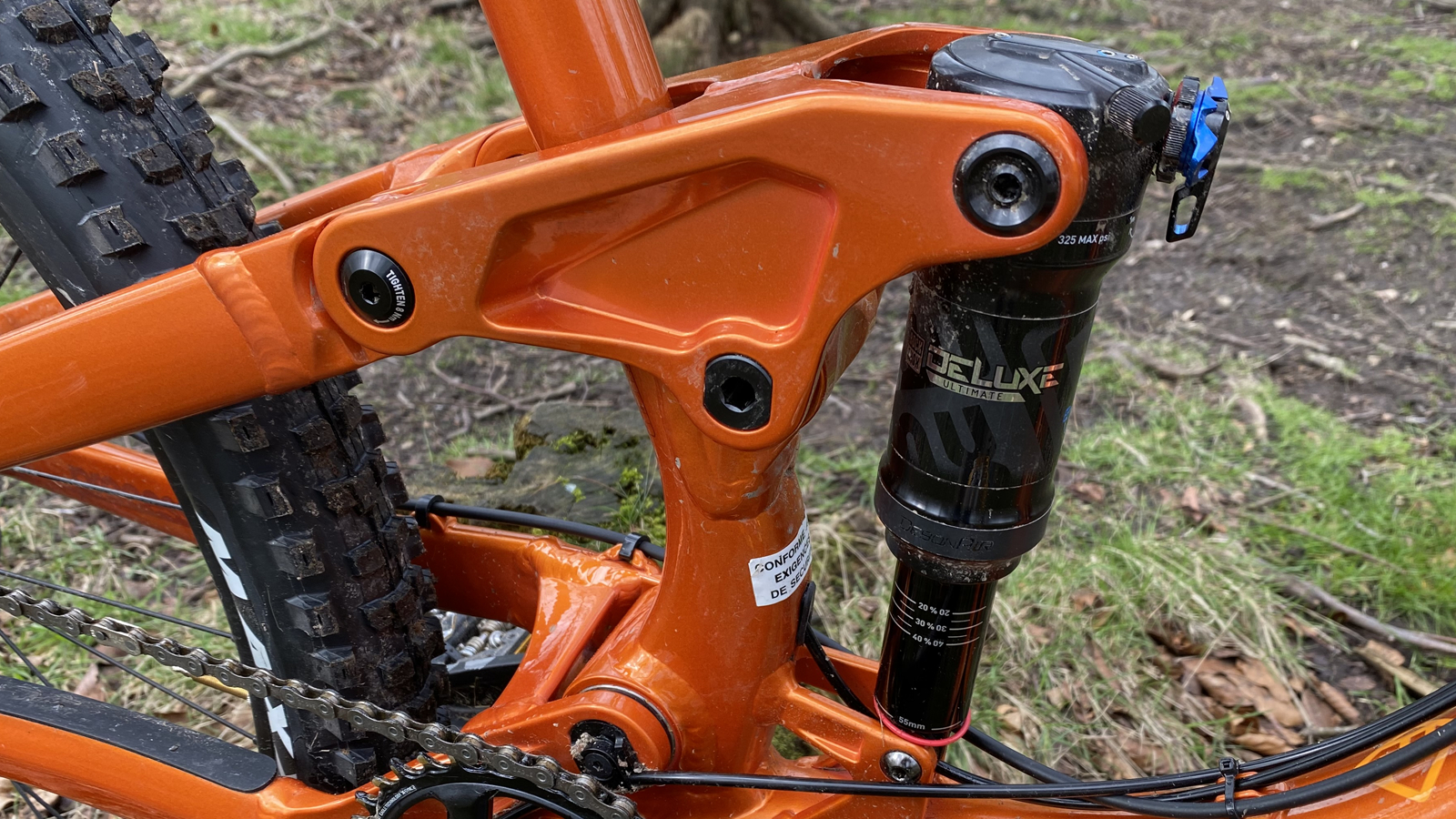
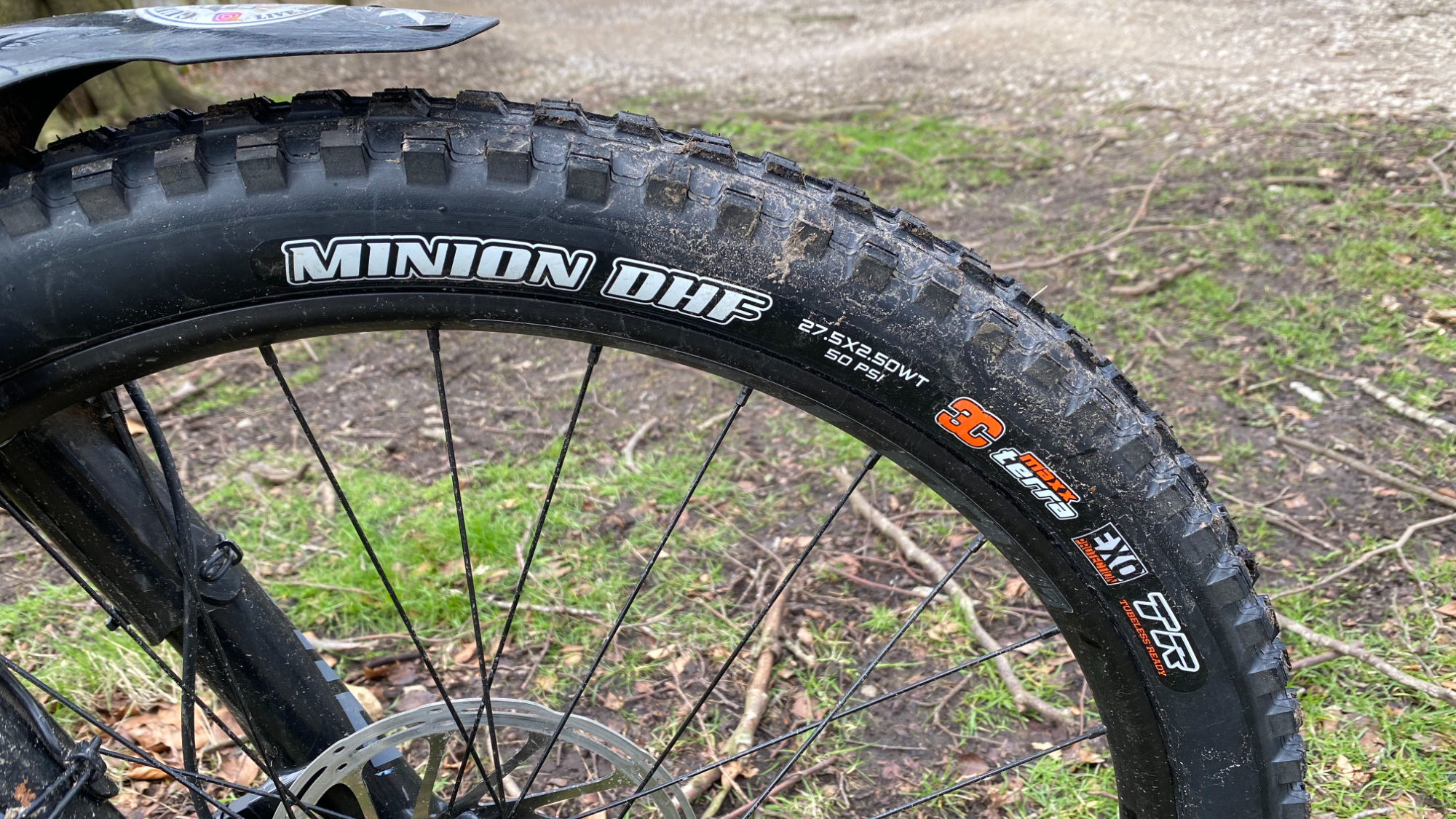
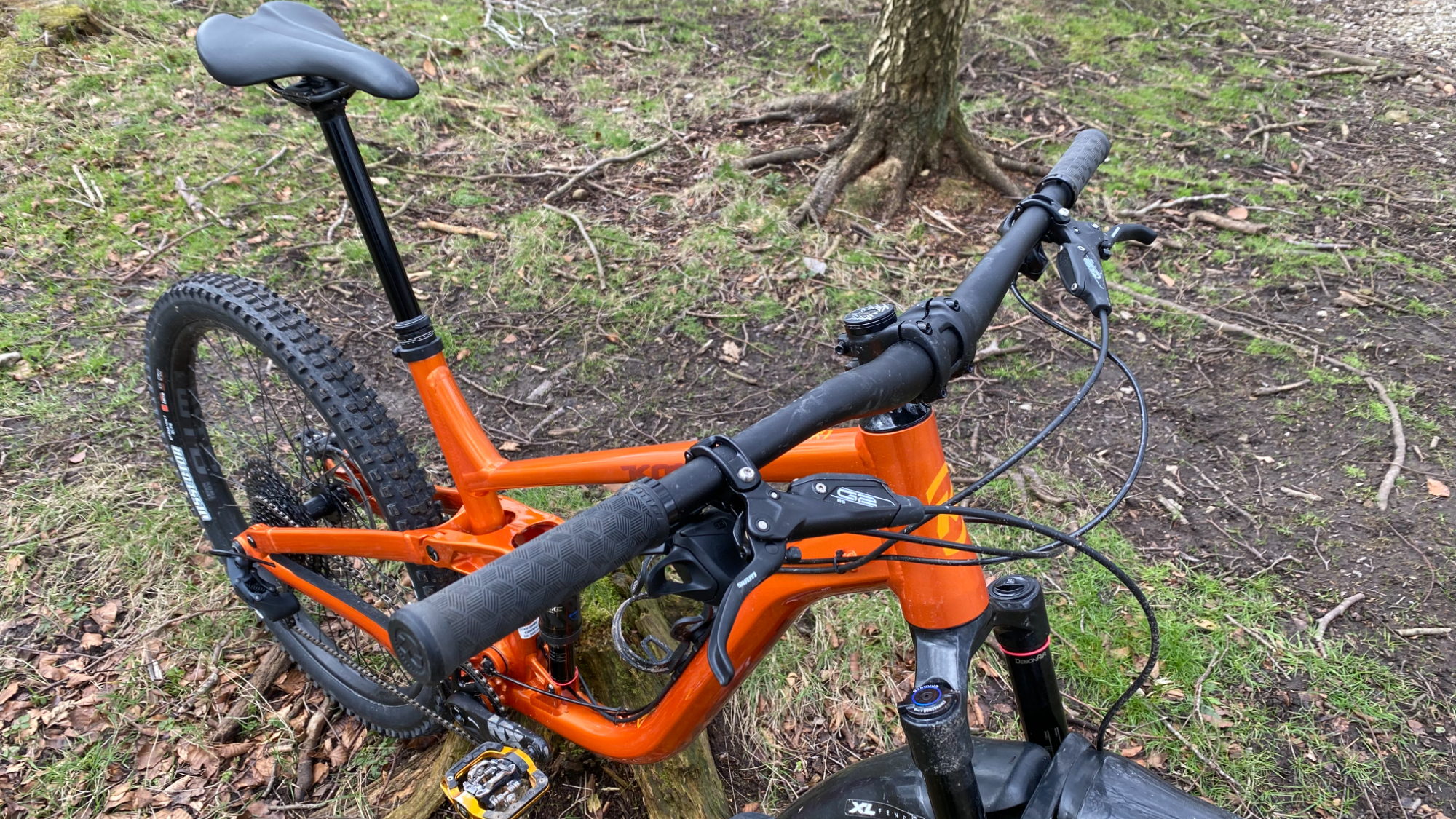
Components and build
Kona has saved costs on the simpler frameset and they’ve spent the extra budget beyond the top of the range rear shock, feedback-rich SRAM G2 RS brakes with a 200mm front rotor and triple compound Maxxis DHF front and Dissector rear tires. The NX shifter feels more sluggish and vague than GX or XT triggers we’ve used on other bikes of a similar price recently The lever for the dropper posts feels soft and strained even when new too so your thumbs are in for an underwhelming experience.
While the WTB KOM rims are wide and survived testing just fine, the rear hub can have a noticeable engagement lag if you’re caught between freewheel pawls. The NX rear cassette has a smaller 11-50T overall gear range than more expensive options and weighs a ton too. While the dimensions are ok, the Kona brand bar has a stiff, dead character which makes the basic Charger damper in the Pike Select fork feel harsh and crude faster than normal once you start slapping into rocks at speed. This also makes it look expensive compared to other shop-bought bikes where you’ll often get a carbon frame for similar cash and at just under 15kg without pedals, it’s relatively heavy too.
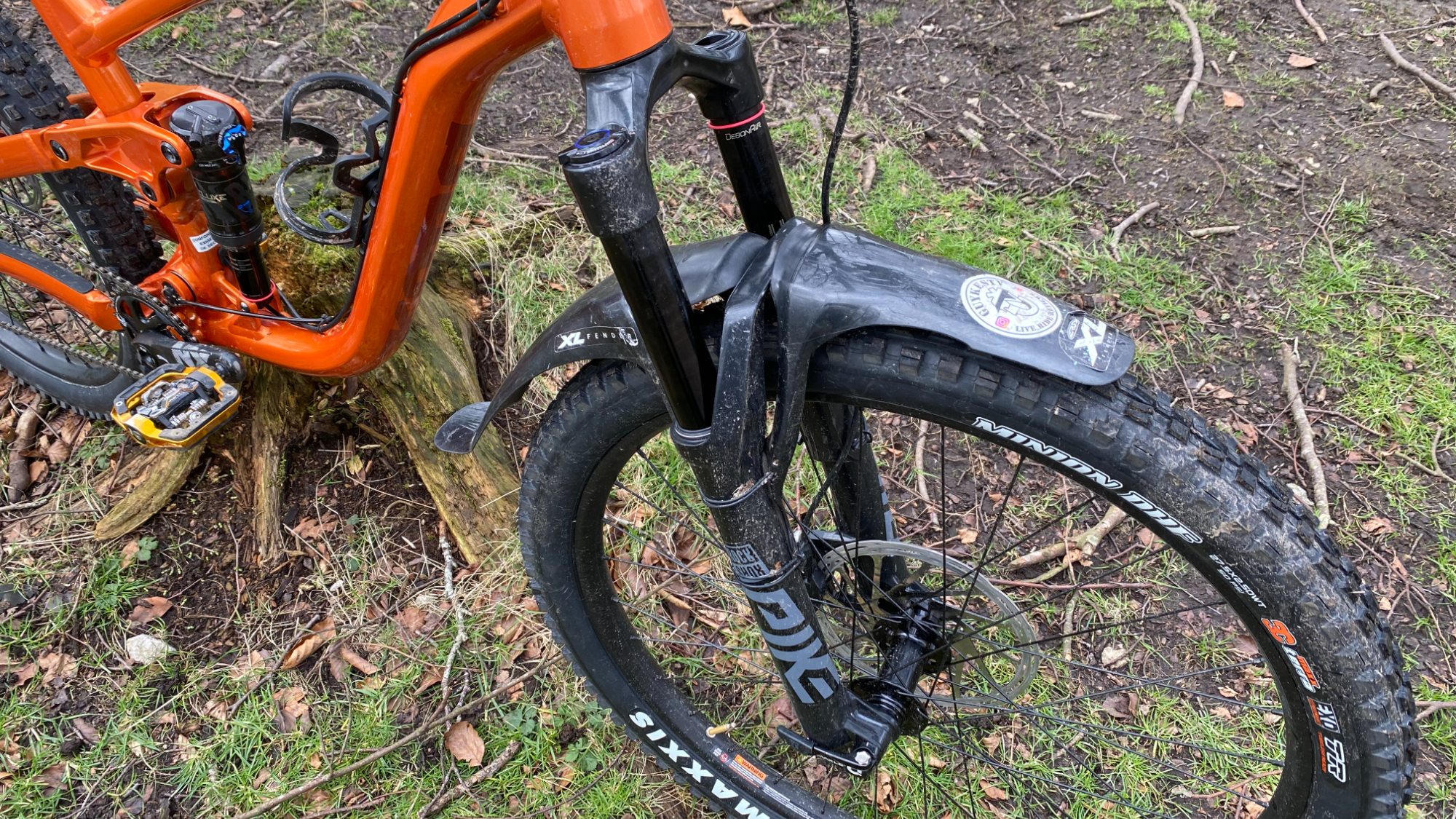
Ride, handling and performance
Kona has always managed to command a premium price based on its ride vibe though so we still charged into the test with high expectations. The first power stroke gives an awkward sense of a bent pedal axle though as flex from the mainframe is obvious enough for several testers to comment on it unprompted. Given that the DHF/Dissector tire combo should be one of the fastest trail tire pairings we even checked the brakes weren’t rubbing after working harder than expected on climbs. Add the naturally slower, more easily stalled roll of the 27.5in wheels and if you’re coming off a 29er things are going to seem very slow and sluggish. The slow freehub engagement can also leave you hanging coming out of corners which undermines what should be a faster acceleration from reduced wheel inertia.
Back off the boost slightly though and the back end actually pedals pretty well in suspension terms. It’s mobile once it gets moving and easily pushes deep into travel in default set up, but there’s no obvious bob or chain pull-back over rocks or stutter bumps. If you want a crisper ride you can move the low-speed compression ‘gate’ to the 0 or + position. If you’re straining out of the saddle then there’s a ‘pedal’ lever to flick across and really firm things up. The generous BB height means pedal strikes are rare even with 175mm cranks so you can keep them spinning on broken ground. The neutral pedal response, short rear end and sensitive trunnion-mounted shock keep the rear tire well connected for a 27.5in too. That applies to cornering as well as climbing and combined with the chunky rear stays the back end is pretty potent in terms of pushing the Process hard on progressive trails. The short back end also makes it easy to pop the front wheel up and over trouble or manual off drops and if you ‘love back wheel’ you’ll potentially find an eager playmate in the Process.
Given the predictable Pike fork - set up at 140mm for a stiffer, less leveraged structure - the benchmark broad DHF tire and a stout, stubby stem we were expecting a similarly aggressive vibe from the front end too. Definitely faster and more agile in feel than a 29er but with the more muscular, burly feel you normally get from a smaller wheel and shorter-legged fork. Straight away though the Process front tire kept catching us out by twitching, skipping and slipping suddenly and with little provocation. The first couple of times we passed it off as bad riding or tired arms on our part but swapping the bike between testers on repeat runs repeatedly pointed the finger back at the bike.
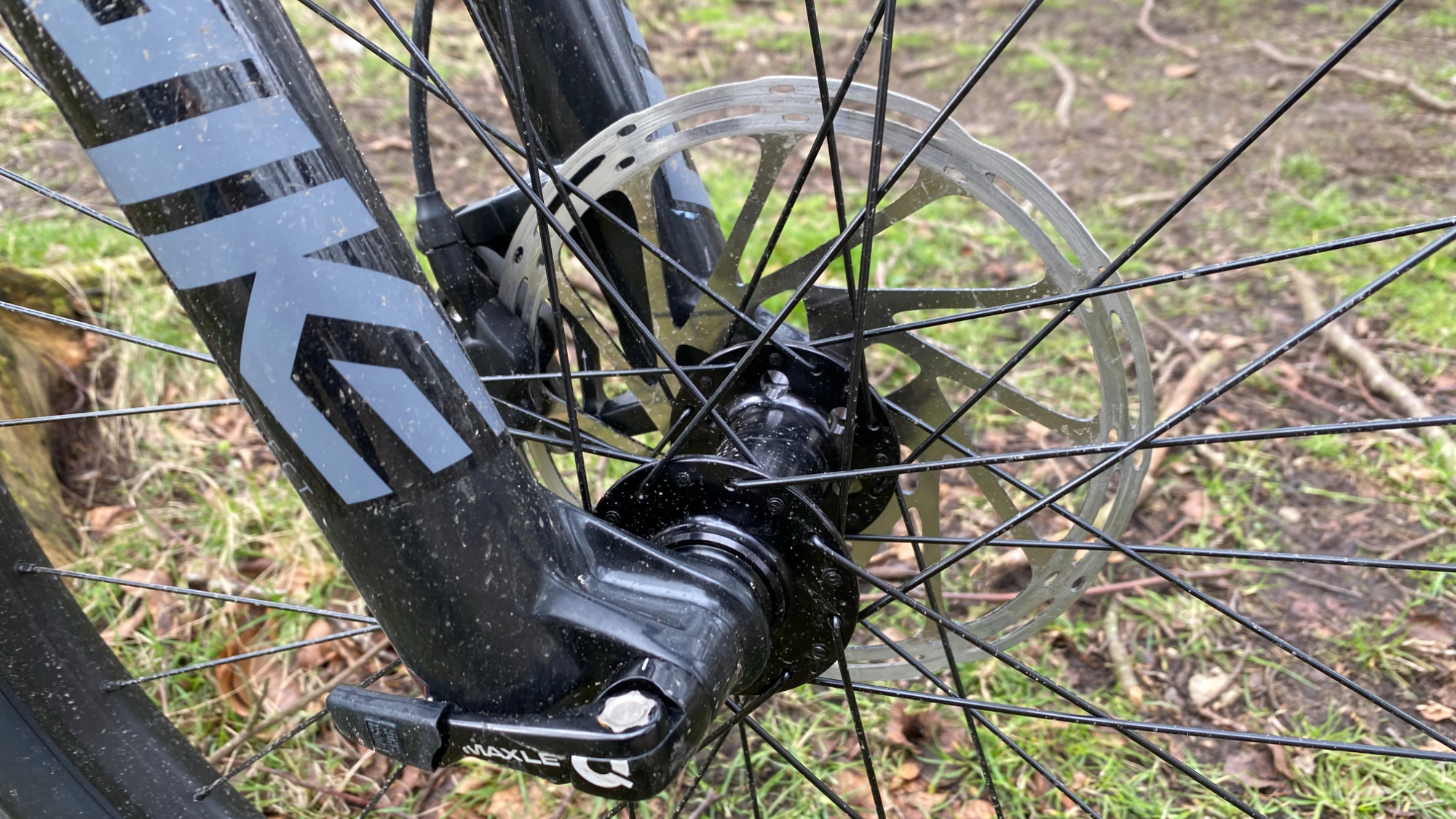
The overall issue seems to come from several elements. The super-short rear end moves rider weight forward in the overall balance too so while the reach is reasonable on paper it feels short on the trail. That further moves weight away from the more capable back end and overloads the already easily overwhelmed front end. The long offset fork and flex in the skinny front tubes make it feel steeper and twitchier in the head than the actual 66-degree angle and the big 200mm front rotor doesn’t help if you’re heavy-handed. While the smaller wheels definitely let you turn a lot tighter than a 29er and harder in theory, the dynamic height relative to the axles makes it less keen to tip in and commit even on really well-shaped bike park berms. That hesitancy isn’t helped once a few sketchy front-end moments have underlined rider confidence too. Attempting to sit the bike back more on its haunches with higher fork pressures just exposes the simpler Charger damper in the Pike and also highlights the stiff, numb feel of the Kona XC/BC bar. The dislocation between the stiff, short rear and the wriggling, ricocheting front end is harder to balance on the trail than a bike that’s softer and flexier overall and consistent trust was hard to establish whatever we tried to do with suspension settings, tire pressures and bar roll etc.
It’s not just a problem at high speeds or under high loads either. While the 76-degree seat angle means poise is good without reaming yourself on the saddle nose and it can hook a tight climbing turn on smoother surfaces it doesn’t take much to knock it off line. Even pulling hard on the bars to try and force the Kona up and over blocks tended to cause more problems than it solved. In other words, while dabs are a lot less dangerous than sliding or twitching front wheels at speed on descents, we still suffered a lot of frustrations on climbs.
Verdict
Having associated Kona with great handling bikes since riding its classic early 90s steel hardtails and then people’s favorite hardcore bikes like the Stinky, Chute, Honzo and others we were expecting great things from the Process. The sensitive rear shock, neutral pedal/traction performance and stiff, short rear end matched with smaller, more agile 27.5in wheels give it potential to be a really fun ripper on the trail too.
Unfortunately every time we started to push that potential - or sometimes on the first descent out of the car park - the sketchy front end significantly undermined control and confidence. Soft feel underfoot makes it hard to get it back up to speed or the top of the hill and wastes what should be the prompt and poppy feel of the smaller wheels. These issues are harder to forgive when the weight is heavier than average and you’re not getting any special features in the frame or good component value overall either.
Test conditions
- Temperature: 2-8 degrees
- Surface: Off-piste woodland singletrack, bike park berm and jump lines, red and black grade man-made trails
Tech Specs: Kona Process 134 DL 27.5
- Price: $4,099 / £3,899
- Model name: Kona Process 134 DL 27.5
- Discipline: Trail
- Head angle: 66-degree
- Frame material: 6061 Aluminum Butted
- Sizes: S, M, L (tested), XL
- Weight: 14.92kg
- Wheel size: 27.5x2.5/2.4in
- Suspension: RockShox Pike Select RC 140mm travel, 46mm offset/RockShox Deluxe Ultimate Trunnion 134mm travel
- Drivetrain: SRAM GX Eagle rear mech, 12-speed SRAM NX shifter, 11-50T cassette, SRAM SX chain
- Cranks: SRAM DUB 34T chainset
- Brakes: SRAM G2 RS brakes with 200/180mm rotors
- Cockpit: Kona XC/BC 35 800mm bar and 55mm stem
- Wheelset: WTB KOM Team i30 TCS 30mm rims and Formula hubs
- Tires: Maxxis Minion DHF EXO TR 3C MaxxTerra 27.5x2.5in WT front and Maxxis Dissector EXO TR 3C MaxxTerra 27.5x2.4in WT rear tires
- Seatpost: TranzX Dropper +RAD 200mm
- Saddle: WTB Volt saddle

Guy Kesteven has been working on Bike Perfect since its launch in 2019. He started writing and testing for bike mags in 1996. Since then he’s written several million words about several thousand test bikes and a ridiculous amount of riding gear. He’s also penned a handful of bike-related books and he reviews MTBs over on YouTube.
Current rides: Cervelo ZFS-5, Specialized Chisel, custom Nicolai enduro tandem, Landescape/Swallow custom gravel tandem
Height: 180cm
Weight: 69kg
